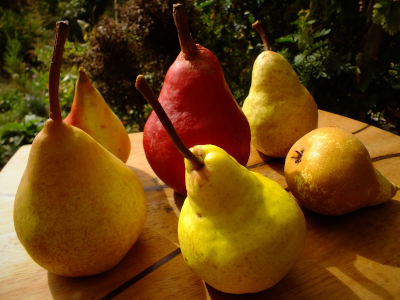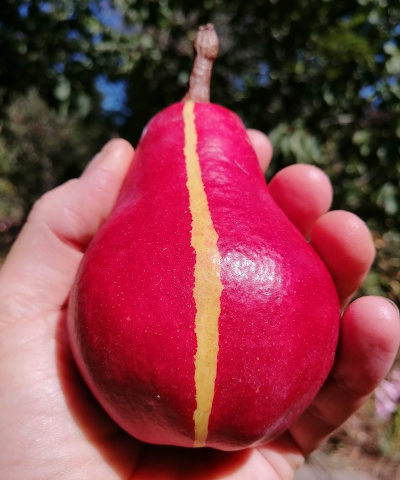Seasonal Pear Selection
Related
How to determine the ripeness of a pear for eating
Pears are typically harvested when they reach maturity but are still firm. Pears picked too early will not ripen properly, while those left on the tree too long may become overripe and mushy.
Determining the ripeness of a pear depends on the variety, as different types have slightly different indicators. However, here are some general tips to tell when a pear is ripe and ready to eat:
-
Color: Check the color of the pear. Most pears will change color as they ripen. However, the exact color change varies depending on the variety. For example, Bartlett pears turn from green to yellow as they ripen, while Anjou pears remain green but may develop a slight yellow or brownish hue. Red varieties will develop more intense color as they ripen.
-
Texture: Gently press the pear near the stem end. It should give slightly under gentle pressure, indicating ripeness. If it feels rock hard, it's not yet ripe. However, be careful not to press too hard, as you may bruise the fruit.
-
Fragrance: Smell the pear near the stem end. A ripe pear will often have a sweet aroma, especially around the stem. If it smells fragrant, it's likely ripe.
-
Check the Neck: For most pear varieties, the best way to determine ripeness is to check the neck. Apply gentle pressure to the neck of the pear with your thumb. If it yields slightly, it's ripe and ready to eat. If the neck feels firm, it may need more time to ripen.
-
Time: If you're unsure about the other indicators, you can also gauge ripeness by how long the pear has been off the tree. Pears picked when mature but still firm will ripen at room temperature within a few days to a week. You can speed up the ripening process by placing the pear in a paper bag with a ripe banana or apple, as these fruits release ethylene gas, which accelerates ripening.
Remember that pears can go from ripe to overripe fairly quickly, so it's best to check them regularly once they start showing signs of ripeness. Once ripe, store them in the refrigerator to slow down the ripening process and extend their shelf life.

